In my studio, I work with three different types of wax: Beeswax, which is soft and does not crackle; paraffin, a harder wax that, used alone, can crackle too much, to the extent that your image can be lost; and also soy wax, which I buy in bags of flaked wax. This is the softest of waxes and leaves a very soft line compared to the paraffin/beeswax mix.
When I work on a batik with the tjanting tool I like to use mostly a mix with more paraffin in it than beeswax, and this gives me a crisp, sharp line. If I come to areas that I do not want crackling, I have to use pure beeswax, but usually I would use a mix — a little more of beeswax than paraffin. If I want a very muted batik and I want to use the natural plant-based wax, I will use the soy wax, and this leaves a soft line. It is a very porous wax, so color leaches into the waxed areas and you end up with different muted shades.
I want to show you some examples of how the different waxes look under different conditions.
- Small heating pot of soy wax.
- The larger electric frying pan with the beeswax/paraffin mix.
- Here is a chunk of paraffin on the left, and a big chunk of the beeswax on the right
- Here is a bag of flaked soy wax.
You can see a paper towel in my left hand that I use to catch the drops when I go back to get more hot wax. All the time I am working, the wax in the tjanting is cooling, and it will either run out of the wax or it will cool so that it doesn’t penetrate the fabric. At that point, I have to dip the tjanting into the wax again and hold it there for a very short time so the tjanting gets warm again so it will perform. The unicorn batik in the center was done quite a long time ago, but you can see the lines that the tjanting made very clearly as they outline the unicorn, the flowers, and the chasm below. The tjanting here provides a structure for the progress of this batik.
Below, as you look at the Pegasus and the unicorn in the middle and also the unicorns rising from dreams on the right, you can see shades of color within the bodies of the unicorn and the Pegasus. Those shades are produced by applying with a brush very hot wax to the image. And as the hot wax hits the fabric, it bubbles a little bit, making a porous area that is darkened. The artist needs to be very careful as they’re doing this, because overly hot wax can burst into flames. So be careful as you try to heat wax to very high temperatures. You never want it to begin to splatter or bubble.
As you’re working with a brush to fill in the areas with the hot wax, you need to keep a slight distance from the line of the tjanting tool, or it will begin to melt and you will not see that crisp line.
The batik below you see the horse dreaming of unicorns, flying up from the tree; my magical frogs batik in progress; and a close-up detail of the magical frogs on the far right. It is interesting to see the wax before it is ironed out, and you can see all of the crackling in the design where the dye will seep in and form that interesting crackle that I love so much. These were made using a good amount of paraffin into the beeswax/paraffin mix, the secret to getting that sharp crackle. And now on to the soy wax…
The batik below were all done using soy wax and have a more muted line with areas with color seeping into wax, forming areas that are similar to the wax that is heated to make a soft tone within the light color. The soy wax is very similar to the paraffin/beeswax to work with, but has the more muted, less sharp edge. When it comes time to remove soy wax, it is reported it can be washed out with hot water and detergent. I cannot recommend trying this in your washing machine as I did! Maybe the water wasn’t hot enough, but it did not all wash out very well but it did leave a residue I had to fight with for some time. Of course, many have good luck boiling wax out of the fabric, and that could be done here, as long as the dyes are set very well and you have a safe place to work. One of my followers, Linda Valentino, suggested a large roasting pan with a cover could be used on a stove safely, which sounds like a good idea, something maybe I will try, but I prefer to try it on a simple batik that I have not spent months working on.
- Mare and Foal in Pink Field
- Wind and Waves
- Garden in Moonlight
- Forest Mystery
I have not included the synthetic batik waxes, which have a soft quality similar to my paraffin/beeswax mix, as I have not used these. They are a little less expensive, and I think they would produce similar results.
I get my batiking supplies – my fabric, my wax, my fiber reactive dyes, my silk dyes, and the tools from dharmatrading.com in California. They have been in business since 1969. They also have books, materials for scarves and for dyeing wool and lots of other things. They are good at finding information about handling different products in their catalogs and on their website, and I can talk to an actual person later in the day because they are three hours behind us here in the East. There are also other good companies around like Pro Chemical in Fall River, Massachusetts and others.
I hope you have fun with your batiking and now you have more knowledge of selecting your waxes. There are so many variations that you will find.








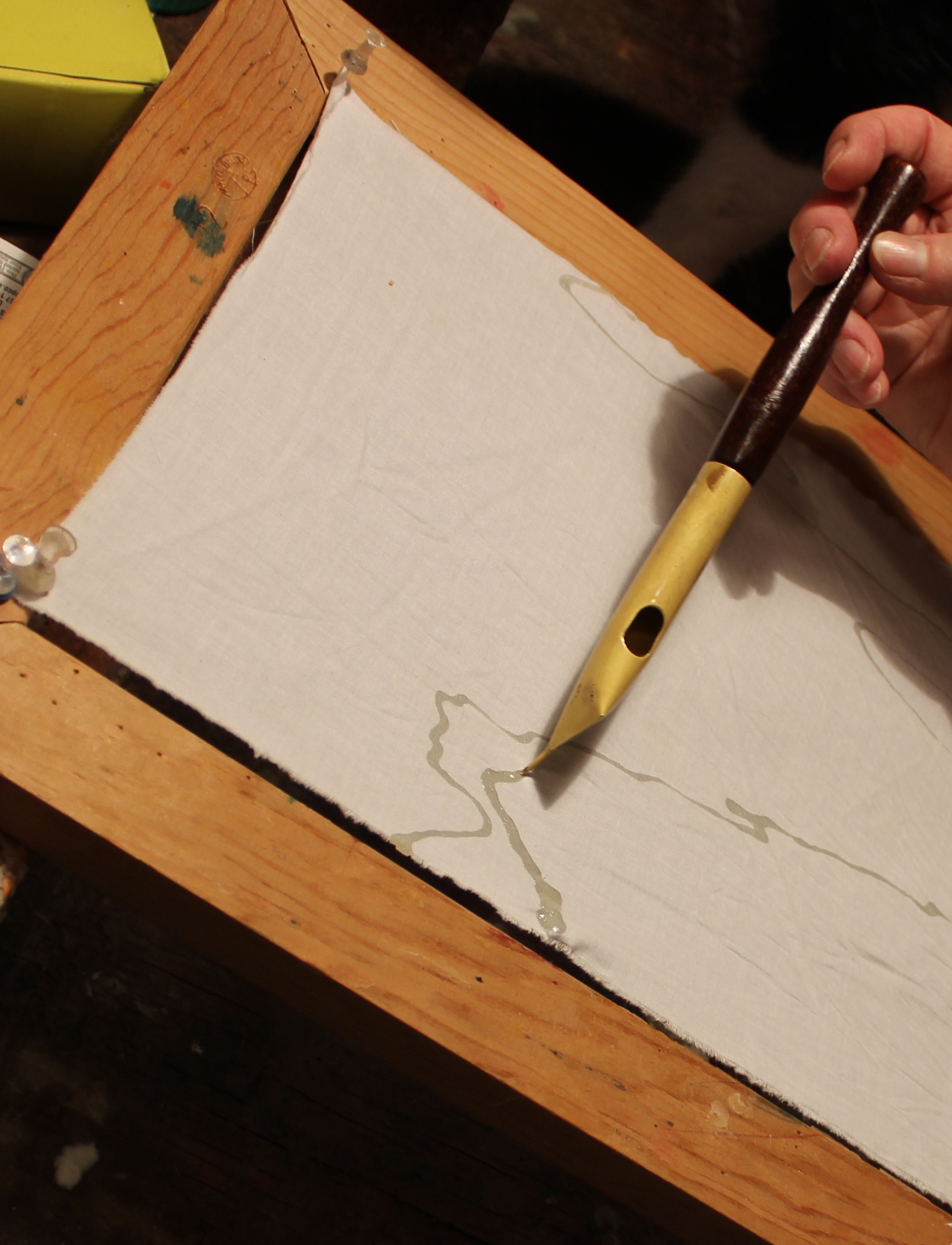
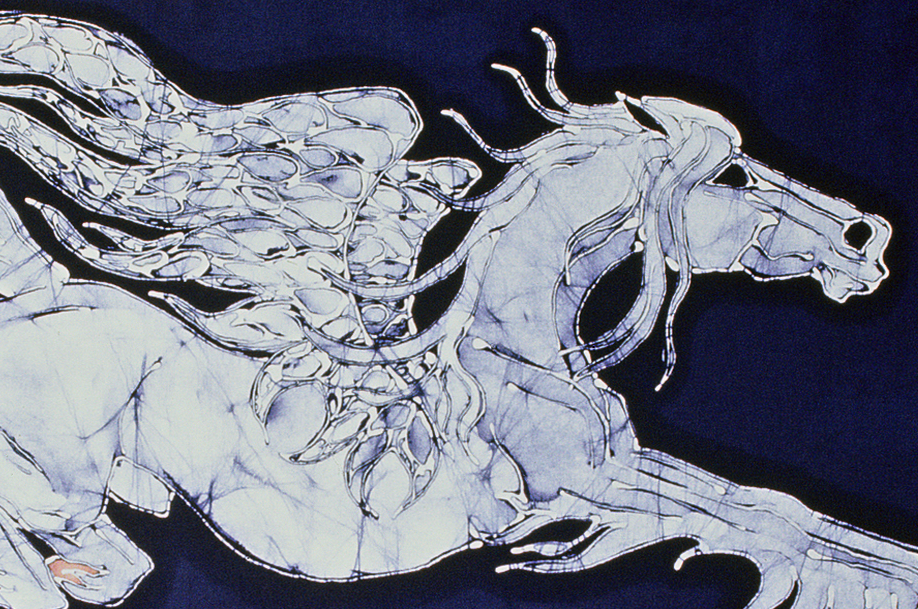


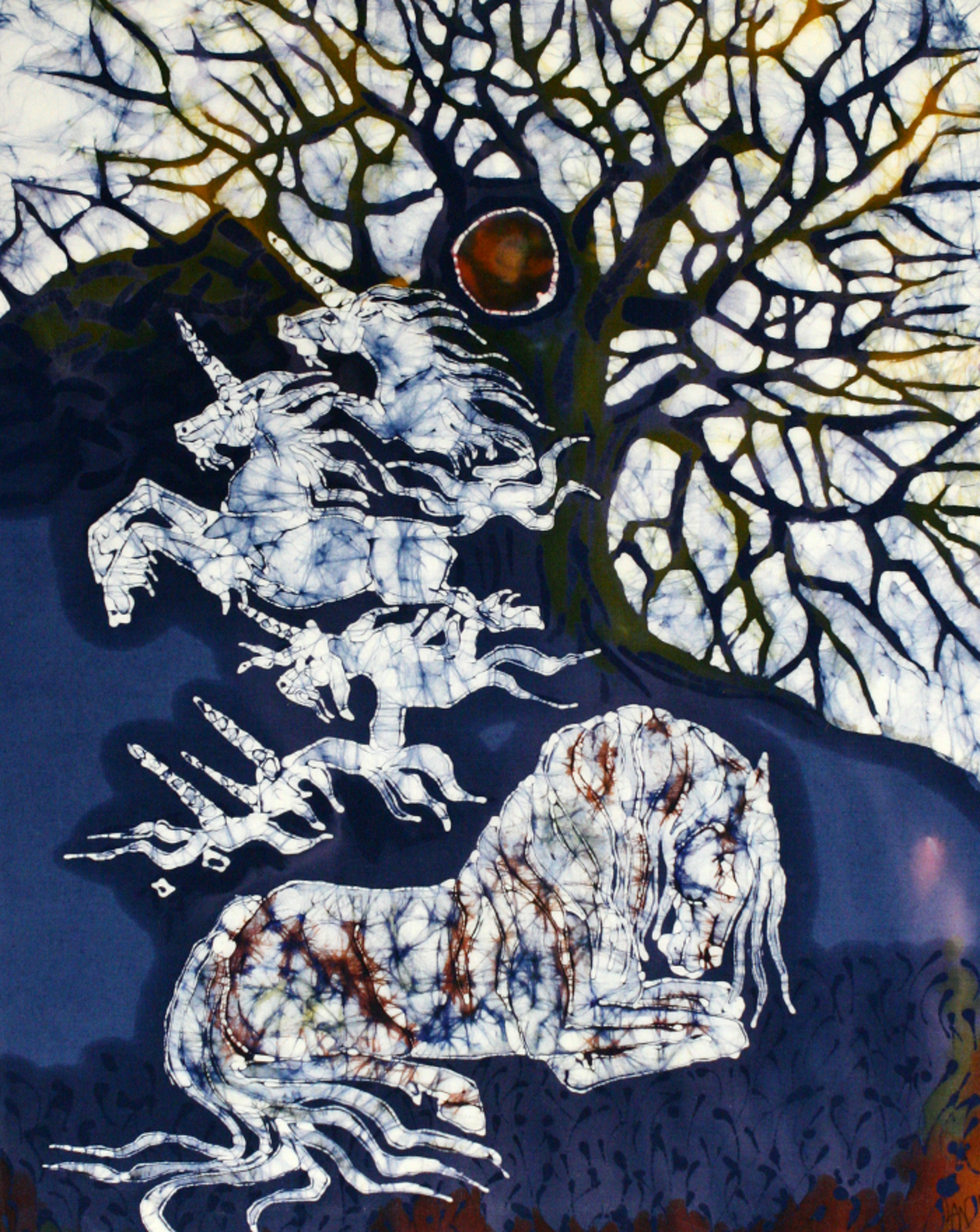


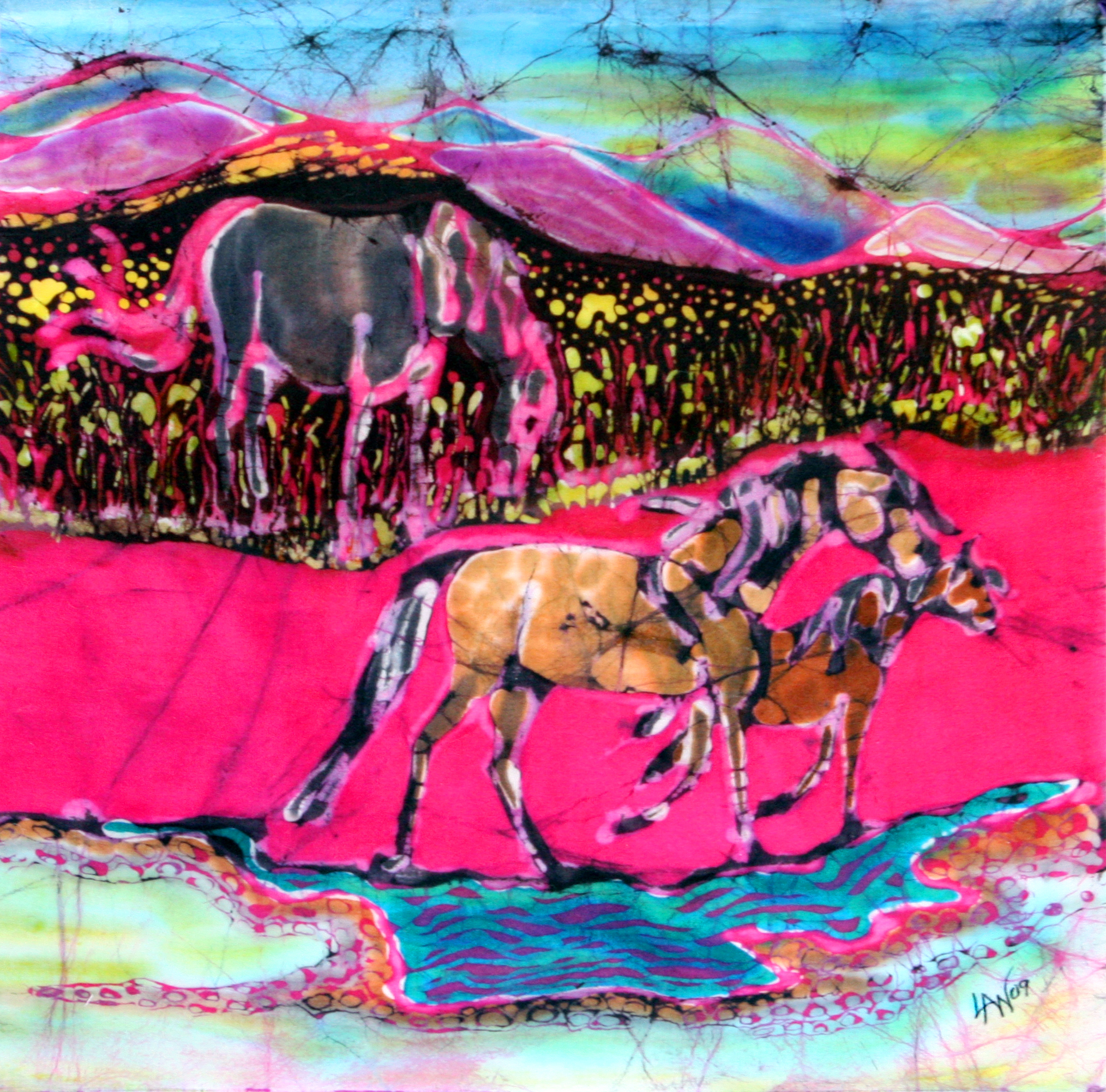
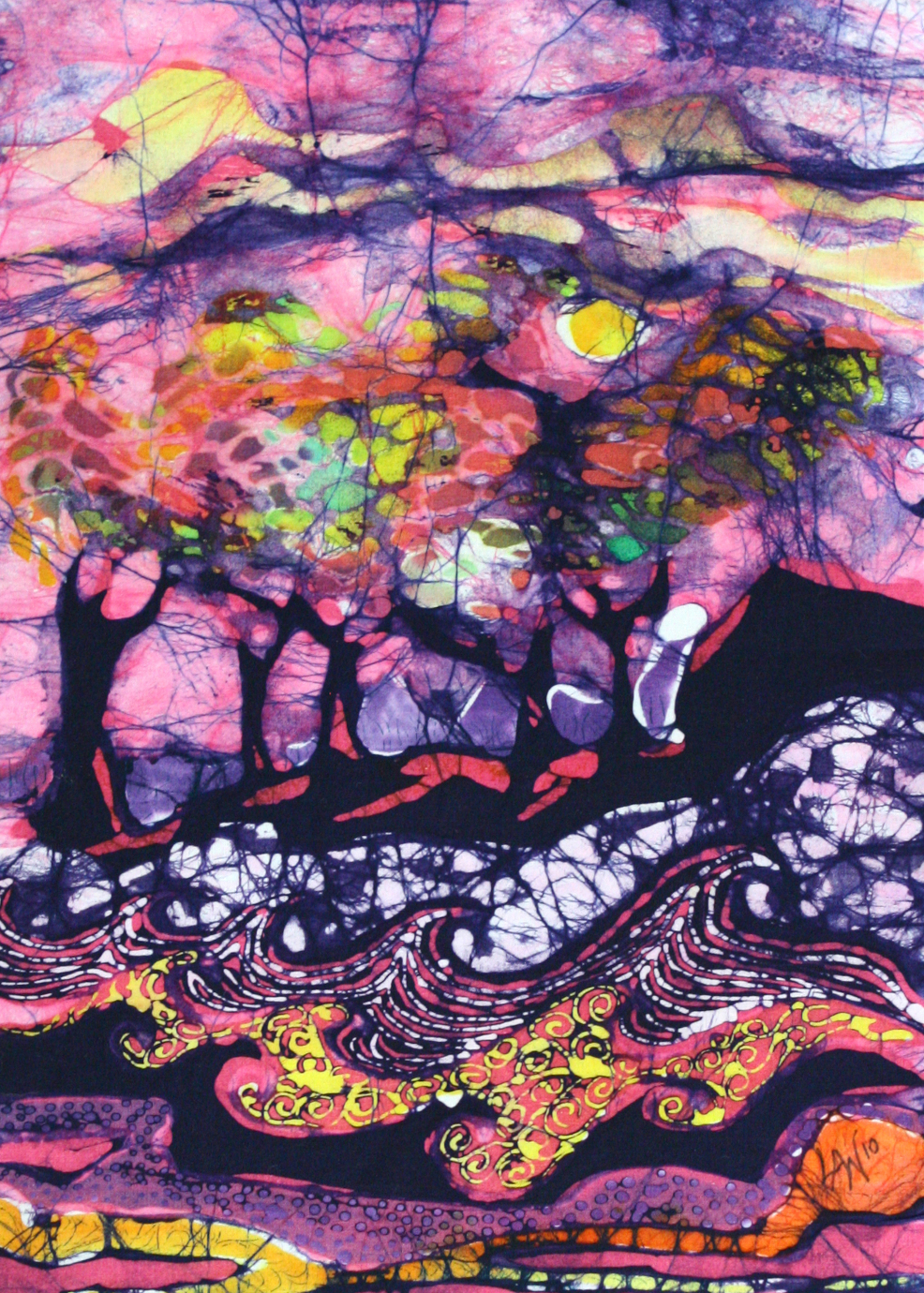


Thanks for the lesson! Fascinating and much more complicated than I thought. I’m in awe of your talent.
Thank you so much Maggie!
So glad I have gotten to meet you and see your gorgeous creations as well as farm.
Happy Autumn and good luck at the sheep and wool!